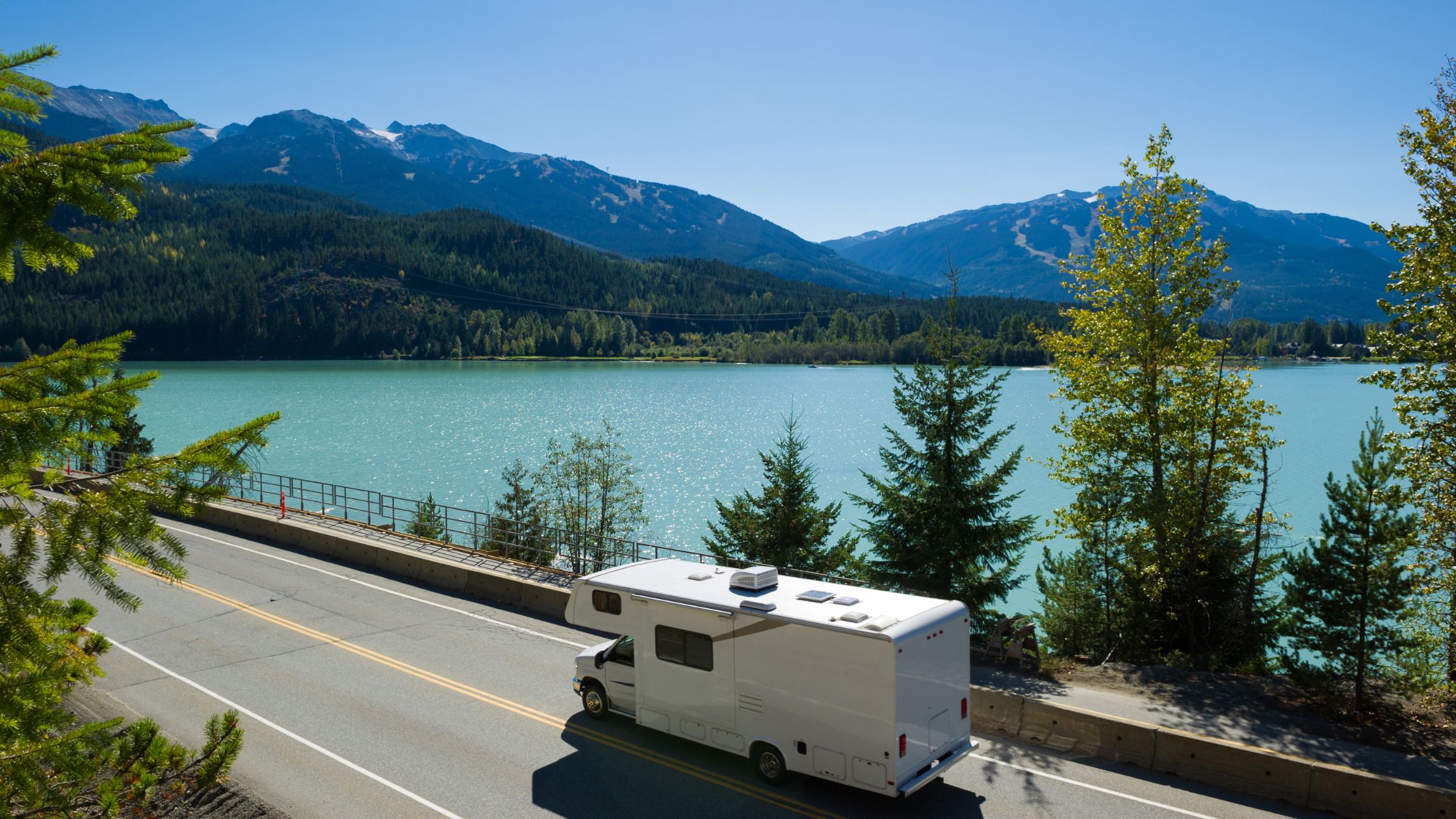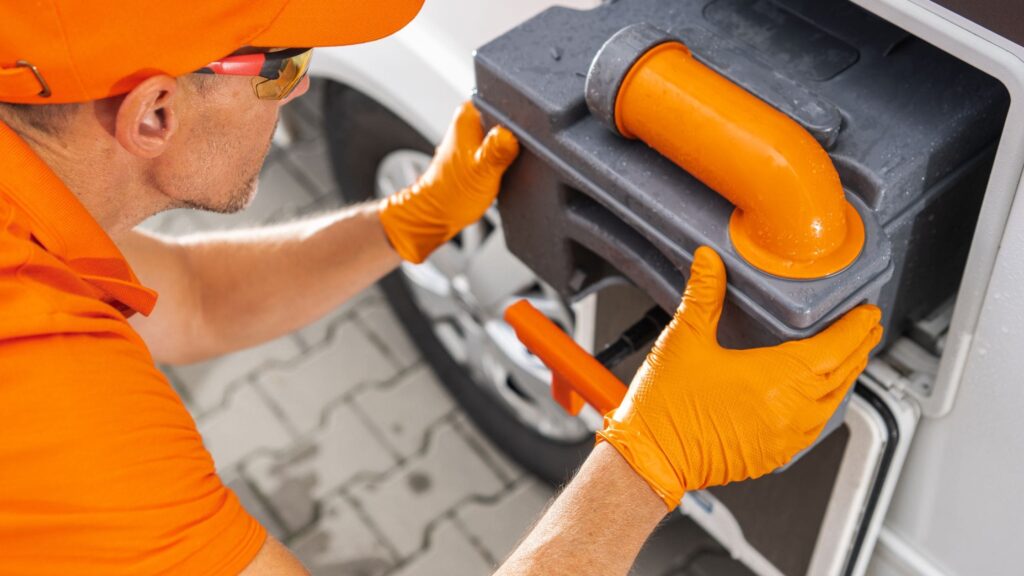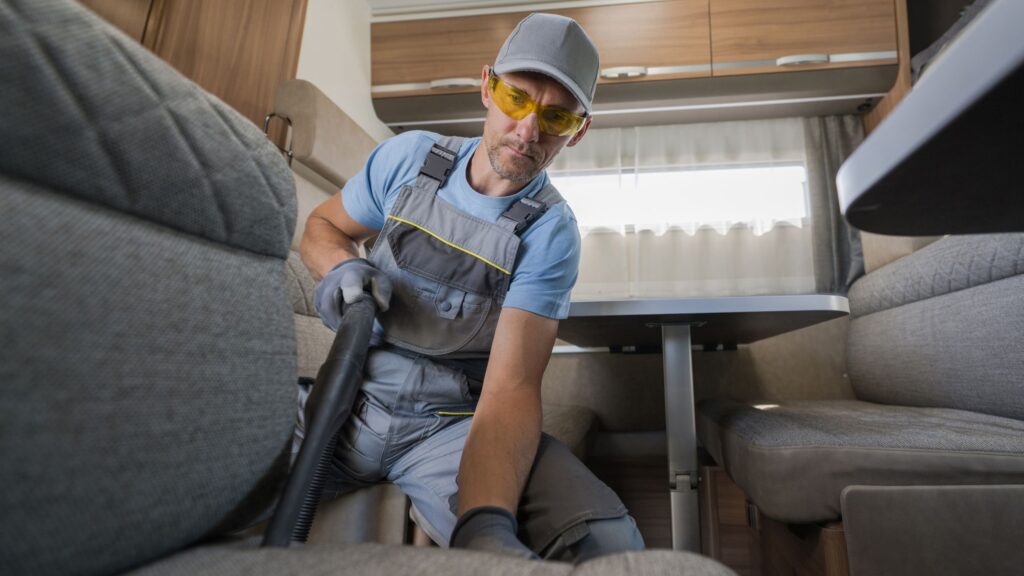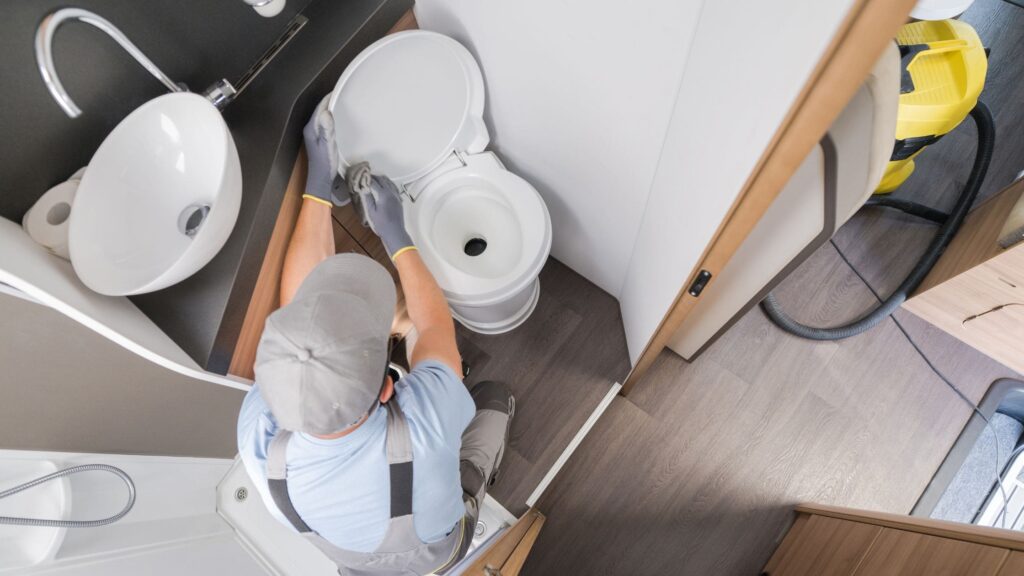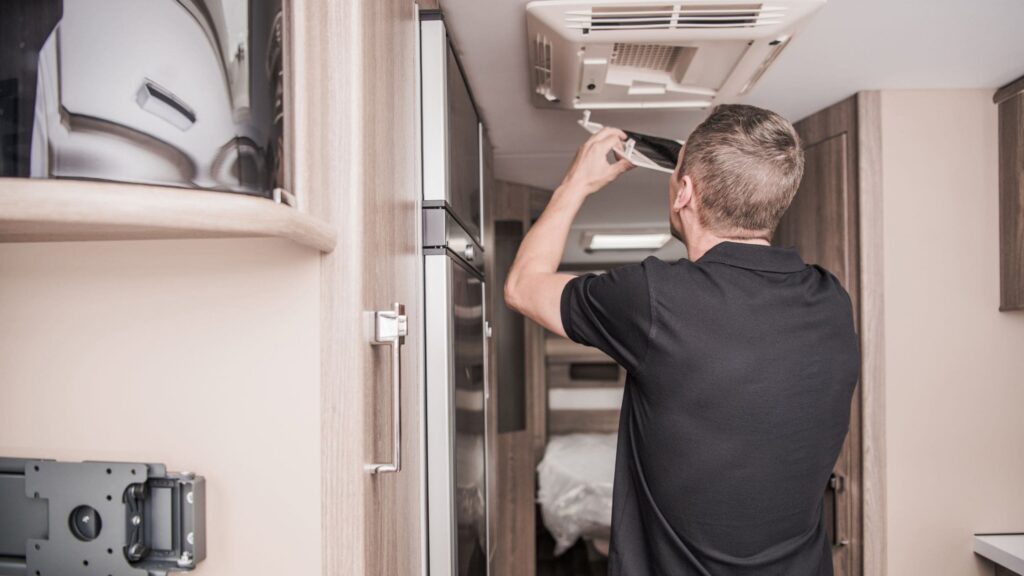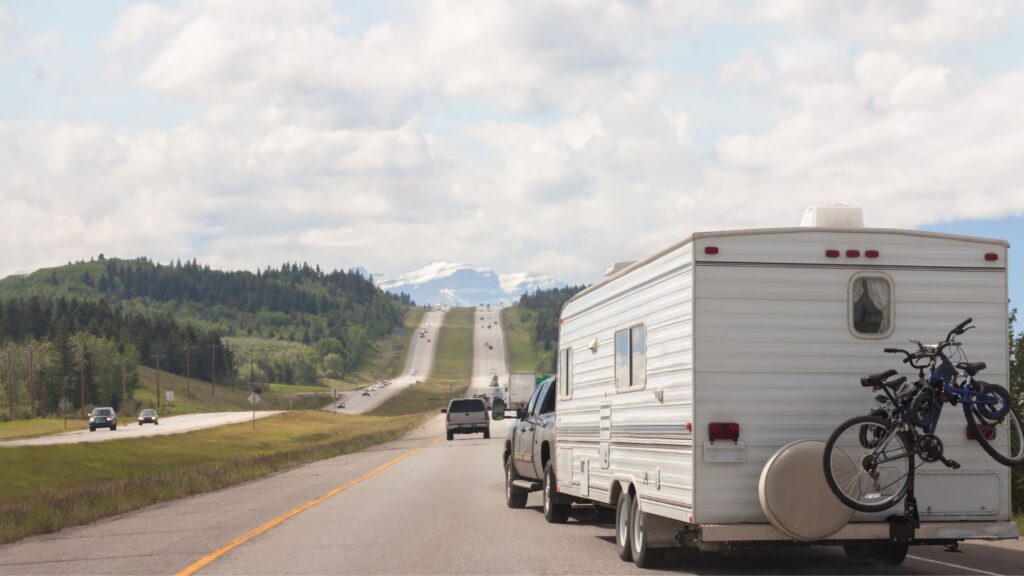Looking after your motorhome isn’t just about keeping it on the road, it’s about making every trip safer, smoother, and more enjoyable for you. When we stick to a simple maintenance routine, you can easily add five to ten years to your motorhome’s life compared to one that’s been neglected. Regular care means fewer surprises, like roadside breakdowns, which drop by nearly two-thirds when you run quick monthly checks. It also helps keep your annual repair bills closer to £250–£500 instead of spiking over £1,500 during those dreaded “catch-up” years.
Booking an annual service with an Approved Workshop Scheme (AWS) technician is another smart move. Their forty-plus inspections, from the electrical system to damp checks, give you peace of mind and even boost resale value. Campsites now often ask for an official Electrical Installation Condition Report (EICR) every three years, so staying on top of that keeps things stress-free. Even clearing leaves and dirt from your motorhome roof can save up to three percent on fuel.
In this article, we’ll focus on how you can make maintenance simple, avoid costly problems, and keep your motorhome running like new for every adventure.
Is Maintaining a Motorhome Necessary
Maintaining your motorhome is not optional if you want to avoid costly repairs, legal problems, and safety risks. Tyre, brake, and light defects consistently rank among the top three MOT failures, and ignoring these issues can result in fines reaching £1,000. Roof leaks or damp can lead to repair bills exceeding £4,000, and skipping vital oil changes may even force a five‑figure engine replacement. Setting aside just one hour per month for preventative checks saves you from weeks of downtime and unexpected travel disruptions. This regular upkeep keeps your average yearly repair costs in the £250–£500 range, instead of climbing to £1,500 or more during “catch‑up” years. By law, your vehicle must remain in a condition that poses no danger to road users. An annual AWS‑certified service meets this duty by inspecting habitation electrics and gas appliances. Every three years, an official Electrical Installation Condition Report confirms that vibration and temperature cycles have not damaged the electrical system. Even if tread depth appears adequate, tyres older than seven years should be replaced to prevent blow‑outs and MOT failure. Routine AWS damp checks also flag moisture above 15 %, allowing a £200 reseal before it escalates into a structural rebuild.
Why is Regular Motorhome Maintenance So Important?
Beyond avoiding fines and breakdowns, consistent motorhome maintenance protects your investment and lowers ongoing costs. A full service history can reduce your insurance excess by around 10 %, and insurers value AWS‑certified services that include a written six‑month workmanship guarantee. Systematic checks help each major component last longer. Deep‑cycle leisure batteries often serve for about three years, while starter batteries typically last five years when charged regularly and stored frost‑free. Detecting damp early can save thousands — preventive repairs often cost under £200 compared with more than £2,000 when rot takes hold. Even simple habits, like clearing leaves from the roof and vents before a road trip, can cut aerodynamic drag and improve fuel economy by up to three percent. Many motorhome owners also find that taking basic driver‑training and maintenance courses reduces novice damage claims and sometimes earns additional insurer discounts.
Most importantly, keeping your motorhome in working order not only gives you peace of mind on every journey but also helps it command a higher resale value when you sell through brokers, dealers, or directly to new owners.
What are Recommended Professional Servicing and Safety Inspections
You should schedule an annual service with an Approved Workshop Scheme (AWS) centre. This inspection involves over forty checks covering gas appliances, the electrical system, body integrity, and damp detection, with a six‑month workmanship guarantee that offers peace of mind. Confirm if the same workshop can examine the base‑vehicle drivetrain, or if you need to arrange a separate garage appointment. At least once every three years, a qualified electrician should perform a formal Electrical Installation Condition Report (EICR) to comply with UK Wiring Regulations. Some campsites now ask for this documentation before allowing hook‑ups. Many manufacturers and finance providers require both the AWS service and EICR to maintain warranties. To save money and avoid delays, consider winter servicing, as spring bookings often fill months ahead. Keep all maintenance checklists, damp reports, and torque sheets with your vehicle records, as they help protect your resale value when you decide to sell.
What Should Be Included in a General Motorhome Maintenance Checklist?
Think of this checklist as a starting point, every task contributes to your safety and the overall value of your unit. Competitor research suggests inspecting brakes every three months, the chassis and suspension every six months, and scanning the roof seams three to four times a year.
- Monthly: Check tyres for tread depth and pressure, inspect all lights including brake lights, and test battery voltage and dashboard warning lights.
- Three‑Monthly: Measure brake‑pad thickness and top up engine and coolant fluids to avoid system failure.
- Six‑Monthly: Scan all roof seams for cracks or leaks, grease suspension points, and check the chassis for rust or damage.
- Annually: Change engine oil and filters, schedule generator maintenance, arrange a habitation service, and renew your gas‑safety certificate.
- Additional Essentials: Flush the fresh‑water tank twice per year, clear roof debris, wash the underside, lubricate all window seals with silicone spray, test the RCD cut‑out monthly, and inspect 13‑pin or 7‑pin connectors for corrosion. Schedule your formal EICR every three years with a qualified technician.
Read the Manufacturer’s Manual
Your owner’s manual is the most important guide for understanding how to maintain your motorhome correctly. If you’ve misplaced the original, download a free PDF version from the manufacturer’s website, most brands make these available to motorhome owners. Failing to follow the handbook can void valuable paint and body warranties, which often last up to ten years on newer units. Each model has specific torque values, tyre pressures, and filter part numbers that prevent costly mistakes. Typical engine service intervals fall between 10,000 and 15,000 km, but your manual will confirm the correct schedule for oil changes, belt tension, and hose inspections.
Clean the Motorhome (Exterior and Interior)
Cleaning is one of the most straightforward motorhome maintenance jobs, yet it has a direct effect on your vehicle’s condition and long-term value. On the exterior, always wash the roof with a soft-bristle brush to avoid scratching paint or damaging rubber roofs. Never use a pressure washer on these membranes, as high-pressure jets could lead to leaks or water damage that compromise your motorhome roof over time. Inside, wipe window seals monthly to deter mould and condensation, and use a dehumidifier or moisture-absorbing crystals during winter storage to protect surfaces and soft furnishings. Mildew can permanently stain awning fabric within six weeks if stored wet, so always dry it fully before retracting. Twice yearly, apply a UV-resistant wax to exterior panels and roof lights to prevent fading and oxidisation.
What Exterior Maintenance Tasks are Essential for a Motorhome?
Looking after the exterior of your motorhome is vital for keeping it in working condition, protecting its value, and avoiding problems that could lead to expensive repair work. A good starting point is a monthly walk‑around inspection. During this, look for cracks in panels, loose trim, and any early signs of wear or water damage. Carry a spare‑bulb kit, as some EU countries require one by law, and check tow‑socket wiring so any connected trailer lights work properly. Once a year, schedule a full roof wash, including application of UV‑protectant products. At the same time, inspect solar‑panel mounts, since dirt and debris on panels can cut energy output by up to 25 percent. It’s also essential to check wheel‑nut torque with a calibrated wrench after 50 miles (80 km) of any wheel refitting and again before long journeys. These exterior checks, done as part of your motorhome maintenance checklist, help reduce wear and tear, improve fuel economy, and keep your vehicle safe for road users.
Roof Inspection and Maintenance
The roof of your motorhome requires close attention throughout the year, as neglect here can quickly lead to leaks and costly repairs. Inspect all seams every three to four months for cracks, loose sealant, or dampness that could lead to interior water damage. EPDM and TPO rubber roofs benefit from a UV‑protectant treatment once a year, which helps slow degradation from sun exposure and extends their working life. Use a soft cleaning product and brush to clear away dirt, mildew, and debris, especially around air‑conditioning units and vent cowls where buildup can block drainage. Any leaks around skylights, vents, or roof edges should be repaired using sealant specifically rated for your roof material.
Tire Maintenance
Your tires play a critical role in keeping your motorhome safe and performing as expected on every road trip. Always check tire pressures when the vehicle is cold, as heat can distort readings. The legal minimum tread depth for a motorhome under 3,500 kg is 1.6 mm, but many motorhome owners replace them sooner if tread wear becomes visible or handling feels less stable. Inflate tires to the maximum side‑wall PSI during winter storage to help prevent flat spots when the vehicle sits for long periods. Even when tread remains, replace tyres every six to seven years from the date of manufacture to avoid blowouts that could lead to serious damage. For added peace of mind, consider fitting a tire‑pressure monitoring system (TPMS) that provides live pressure and temperature alerts, and don’t forget to confirm the spare‑tire pressure as part of your pre‑trip motorhome maintenance checklist.
Lights and Signals
Exterior lighting ensures your vehicle remains visible and road‑legal, protecting you and other road users. Regularly test all lights, including brake lights, indicators, and roof lights, and replace faulty bulbs immediately. Upgrading to LED replacements is a worthwhile investment, as these draw up to 80 percent less power and last longer, which benefits both your electrical system and your fuel economy when paired with solar charging. Always keep a multi‑bulb spare pack in the motorhome, as some countries require one by law. At the start of each season, clean the 13‑pin or twin‑socket connectors that link your caravan or trailer, and lightly grease the contacts. This simple step helps prevent corrosion and intermittent faults that could lead to breakdown cover claims. Including light checks in your regular maintenance routine not only improves safety but also preserves the overall value of your unit.
Windscreen and Seals
Your windscreen and window seals are easy to overlook, but small issues here can quickly turn into expensive repairs. Repair chips as soon as they appear, because a full windscreen replacement costs far more and may affect your insurance policies. Replace wiper blades if they smear, split, or leave streaks on the glass, as poor visibility compromises your safety in rain. Before any winter touring, top up washer fluid with a cold‑weather mix and inspect seals around windows and doors for cracks. Resealing as needed helps prevent water leaks, mould, and costly water damage inside the motorhome, keeping the vehicle in good working order throughout the season.
Awning and Slide-Out Maintenance
Your motorhome’s awning and slide-outs need regular care to stay in good working condition and avoid wear and tear that could lead to leaks or costly repairs. Begin by inspecting the rubber seals every season for cracks or signs of wear; these should be replaced about every five years to maintain a proper weatherproof barrier. Wash the awning fabric at least twice a year with a mild cleaning product, ensuring you do it before long-term winter storage. Stowing it while damp can encourage mould or mildew, damaging the fabric and reducing resale value over time. Avoid using the awning in winds over 20 mph, as excessive strain can damage spring arms or mounting points. If you notice the awning rolling unevenly, have a professional workshop re-tension the spring arms.
What Interior Maintenance Tasks Are Essential for a Motorhome?
A monthly damp scan helps you detect early signs of water damage, such as musty smells, black spots, or spongy walls. Catching these issues early could lead to a £200 reseal rather than a full rebuild later. Closing blinds while the vehicle is in winter storage protects fabrics from UV fading and reduces the chance of theft by limiting visibility. Regular safety checks keep the home-like interior secure; test smoke and carbon monoxide alarms monthly, and replace their batteries every year. If your motorhome has a burglar alarm or GPS tracking device, verify their operation before storing it for long periods. These interior maintenance jobs add peace of mind, preserve the condition of fixtures and furnishings, and help keep your motorhome’s value strong for future resale.
How Do You Maintain the Interior Fixtures and Furnishings?
Soft furnishings and cabinetry inside your vehicle show wear and tear faster than many other components if left unchecked. Vacuum and steam-clean upholstery once a year to keep odors and bacteria under control, and lubricate drawer runners so cabinetry operates smoothly. Vinyl floors should be treated with low-VOC cleaning products to prevent surface degradation. It’s important to dust ceiling grilles and fridge ventilation panels regularly, as blocked vents reduce appliance efficiency and could lead to damp buildup over time. To help maintain your motorhome through seasonal changes, lubricate window seals and roof-light seals each spring with silicone spray.
How Do You Maintain the Engine and Drivetrain of a Motorhome?
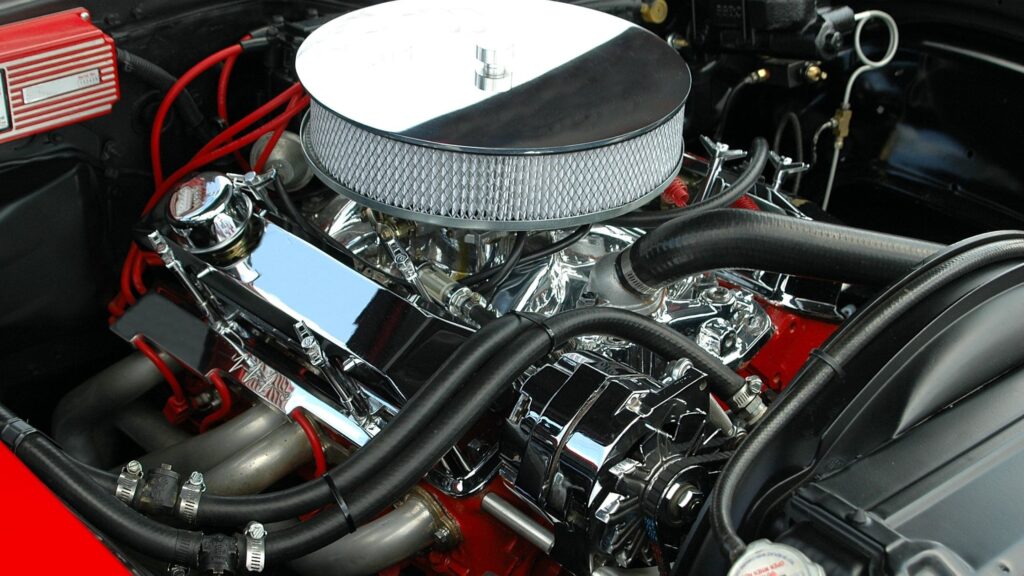
In addition to DIY checks, book a professional diagnostic scan during each annual service. These scans detect hidden electronic control unit (ECU) codes that could cause performance issues if left unresolved. Staying proactive with regular maintenance jobs also supports the resale value of your motorhome, as buyers and brokers prefer a unit with a detailed history of upkeep.
Engine Checks
Looking after your engine is central to effective motorhome maintenance. Oil and filter changes should occur every 3,000–4,000 miles or annually, even for low-mileage units. If you follow mileage-based schedules, most manufacturers specify 10,000–15,000 kilometers. Skipping these intervals could lead to lubrication breakdowns and eventual engine failure, where replacement can exceed £5,000. Check coolant levels regularly, as frequent top-ups may indicate leaks. On dusty tours, replace the air filter early to prevent restricted airflow, which could lead to reduced fuel efficiency and premature wear on components.
During each service, inspect serpentine belts and coolant hoses for cracks, fraying, or glazing. Replace them according to the manufacturer’s interval to prevent roadside breakdowns. Timing belts and spark plugs must also be changed at their specified mileage or time-based intervals, as failure in either system can destroy the engine. Using your owner’s handbook ensures correct parts and torque specifications for every job.
Schedule a professional diagnostic scan with every annual service to detect ECU fault codes early.
Brake System
The braking system is one of the most critical parts of any motorhome maintenance checklist. You should inspect brake pads every three months for tread wear, cracks, or contamination. Pads with deep scoring or less than the manufacturer’s minimum thickness could lead to dangerous stopping distances, so replace them immediately. Brake fluid must be changed every two years, as moisture absorption lowers its boiling point and increases the risk of brake fade. Spongy pedals, grinding noises, or pulling under braking signal problems that require a professional mechanic’s inspection. Testing brake lights and confirming proper operation ensures safety for you and other road users during every road trip.
Transmission and Chassis
Regular maintenance of your transmission and chassis supports both safety and long-term value for motorhome owners. Grease suspension points twice yearly to prevent wear and tear on moving joints. During six-monthly under-chassis inspections, look for fluid leaks, rust, or loose fasteners. Rusted areas on mounting points should be treated with a rust converter and protective coating, as corrosion could lead to structural weakness. If your motorhome is fitted with a prop shaft, torque its bolts to manufacturer specifications to avoid vibration damage on the road.
Check for cracks in hoses, seals around the transmission case, and excessive play in steering or suspension components. Confirm tire pressure and wheel alignment during these checks, as misalignment can accelerate tread wear and reduce fuel economy. Keeping the chassis and drivetrain in good condition protects your motorhome’s performance, reduces risk of breakdowns, and preserves its resale value for when you decide to trade or sell the vehicle.
How Should You Maintain Your Motorhome’s Batteries and Electrical System?
Both starter and leisure batteries are essential to keep your motorhome in working order and prevent costly breakdown cover claims. If your vehicle is parked for more than six weeks, connect a smart trickle charger to both batteries to avoid deep discharge, which could lead to permanent capacity loss. Cold weather can reduce battery efficiency by 30 percent, so maintaining a consistent charge level is crucial during winter storage. Disconnect the starter battery and store it on charge if you won’t drive for extended periods.
For the electrical system, arrange a formal Electrical Installation Condition Report (EICR) every three years, as some campsites may refuse hook-up without proof of wiring integrity. Test the RCD cut-out each time you connect to mains power. Keeping these systems functional protects your safety, preserves your investment, and supports better resale value for motorhome owners.
Battery Testing and Maintenance
A fully charged motorhome battery should read 12.6 volts, while anything below 12.2 volts needs recharging. For flooded batteries, distilled water must stay about a quarter inch above the plates to avoid sulfation, which could lead to premature wear and tear. Voltage testing should be performed monthly, especially before long journeys. Flat starter batteries are one of the top roadside-assist callouts, so always carry jumper cables rated for your vehicle’s amperage.
Look for warning signs such as slow engine cranking, dimming interior lights, or corrosion around the terminals. These can indicate your battery is no longer in optimal condition. Regular testing and upkeep not only help keep your motorhome in working condition but also give you confidence that its electrical system will support appliances, lights, and safety equipment during trips.
How Long Will a Motorhome Battery Last?
Leisure batteries last about three years, and starter batteries about five years, provided they are charged properly and stored in good condition. Deep discharges, where the battery drains to very low levels, can halve their lifespan. To avoid premature replacement, keep batteries charged, avoid unnecessary drain, and store them on trickle charge during winter storage or extended downtime.
Electrical System Overview
Your motorhome’s electrical system demands consistent attention to stay in working order and avoid costly breakdown cover incidents. Set aside time each month to inspect the fuse board, ensuring each circuit is properly labeled and that spare fuses are accessible for emergencies. Test the RCD or GFCI buttons regularly; a tripped breaker that does not reset could lead to serious electrical faults.
Examine connections for corrosion or loose fittings, as wear and tear in terminals or wires can cause lights or appliances to fail during a road trip. Clean solar-panel terminals carefully and make sure regulator cables are strain-relieved to prevent fraying or stress damage. Check every outlet and light fixture, from interior lamps to exterior roof lights, verifying they function correctly.
What are the Key Maintenance Tasks for Water and Plumbing Systems?
You should flush the fresh-water tank twice a year, ideally in spring and mid-summer, using a 50 ppm bleach solution to eliminate bacteria. Clean and disinfect the entire potable-water system annually with a caravan-specific sanitiser designed to break down biofilm and algae without harming seals or fittings.
Inspect every hose and push-fit connector for seepage, as leaks hidden behind walls can lead to four-figure repair work and structural water damage. Check the holding tank, grey water outlets, and wastewater system for clogs or buildup that could lead to odors and bacteria growth. Integrating these checks into your motorhome maintenance checklist ensures every component remains in working order, from the water heater to the smallest connection..
Freshwater Tank Maintenance
Your water tank plays a vital role in maintaining clean water for drinking and cleaning while you travel. To keep it in working condition, replace the pump filter every year. At least once annually, circulate a sanitiser through the system overnight, letting it sit to kill algae and bacteria, then flush thoroughly until no odor remains.
Check the interior of the tank for any buildup, residue, or blockages, as these can impact flow and water quality. Replace charcoal or carbon-block filters every 12 months to maintain a neutral taste and prevent bacteria growth inside the system. Any signs of leaks around the fittings or seals should be addressed immediately, as even minor seepage could lead to water damage or mold inside the vehicle.
Wastewater and Toilet Maintenance
Your motorhome’s wastewater system needs regular attention to avoid odors, buildup, and costly repair work. For the black tank, always use approved toilet chemicals to break down waste and protect the cassette toilet seals. Flushing tank sensors helps maintain accuracy, and adding odor blockers to the grey water tank reduces smells that can build up during longer road trips. Before winter storage, leave the cassette-blade valve open to stop the seal from sticking, which could lead to leaks.
Lubricate the lip seal with a silicone-based spray twice a year to prevent wear and tear, keeping everything in working condition. Dose the grey tank with odor-control additives before long journeys to reduce bacteria growth, especially in warmer seasons. By making these tasks part of your motorhome maintenance checklist, you keep your motorhome fresh, reduce the risk of water damage, and ensure every system remains in good condition throughout its lifespan.
Inspecting Hose Connections and Seals
Checking every hose and seal before each trip is a simple way to avoid problems that could lead to water leaks or gas hazards. Keep a set of spare O-rings in your tool kit, and replace any hoses showing cracks, brittleness, or signs of wear. These are inexpensive maintenance jobs that protect more valuable components.
After reconnecting LPG cylinders, use a soapy-water leak test on flex-hoses, watching for bubbles that indicate a replacement is needed. Look for corrosion or moisture around water-system connections, as early attention can prevent damage to walls and flooring inside the vehicle.
How Do You Maintain Heating, Cooling, and Gas Appliances in a Motorhome?
Each year, schedule a professional gas-safety inspection, this is mandatory if you rent your vehicle but essential for all motorhome owners. Monthly, test your carbon-monoxide detector, as faulty alarms could lead to serious risk while traveling. It’s also recommended to have a certified technician check the gas regulator annually to confirm it delivers between 30 and 37 mbar, which ensures consistent performance for heaters, cooktops, and water systems.
Debris often builds up in and around burner tubes, particularly spider webs, which can weaken the flame on fridges, ovens, and water heaters. Clear these obstructions carefully using compressed air or a soft brush. During every annual service, have a technician verify that vents, seals, and exhaust systems are free of blockages.
Water Heater Maintenance
Your motorhome’s water heater needs attention to avoid buildup that affects both efficiency and water quality. Begin by draining the heater fully, then flush the tank with clean water to remove lime-scale and sediment. This simple step, done annually, prevents clogs and extends the lifespan of heating elements. If your heater uses a sacrificial anode rod, replace it each year, as a worn rod could lead to internal corrosion that shortens the unit’s life.
Use compressed air to clear debris from the burner area, which helps maintain a strong, even flame. As part of your regular maintenance checklist, include a visual inspection of seals and connections for leaks, since water damage inside a motorhome can result in expensive repairs.
Heating and Air Conditioning Systems
Maintaining your heating and cooling systems is vital to keep your motorhome comfortable in every season. Clean or replace HVAC filters at the start of spring and autumn; clogged filters reduce airflow and efficiency, which could lead to strain on the electrical system and higher fuel costs. Gas appliances such as furnaces depend on consistent pressure, so have a professional confirm that your regulator output meets specifications during each annual service. For air conditioning, service the refrigerant every two to three years, as low levels affect cooling performance and can damage components over time.
Seasonal servicing also helps identify early signs of wear, including loose seals or damp buildup near vents. Keeping these systems in good condition improves user experience, protects resale value, and gives you peace of mind before every road trip.
Gas System Inspection
Gas safety is essential for every motorhome owner, especially if your caravan is used frequently or rented out. Test for leaks at every cylinder change using a soapy-water solution on joints and valves, rising bubbles indicate leaks that require immediate attention. If you notice frost forming on the regulator, it could signal a malfunction or contamination that needs professional servicing.
Replace rubber LPG hoses every five years or earlier if cracks, splits, or brittleness appear. Failing to replace worn hoses could lead to leaks or gas-system failure, putting both your safety and your vehicle’s condition at risk.
Appliance Function Testing
Before every long road trip, confirm that core appliances such as your stove, microwave, and fridge are operating as expected. Run the fridge on both 12 V and 230 V power supplies to verify switching works correctly. Check that the travel-catch engages to prevent doors from opening while driving. Inspect your microwave’s inverter fuse and confirm that the turntable rotates smoothly, as a non-functioning turntable could indicate wiring or power-supply issues.
Test each appliance’s wiring for loose connections or scorch marks, as these could lead to electrical problems that affect multiple systems. Regular appliance testing not only ensures that everything is in working condition but also helps you avoid costly repairs during your travels.
Inspect for Damp and Moisture
Moisture is one of the most serious issues a motorhome can face, as it can silently compromise the vehicle’s structure and reduce its value. The first signs include a musty odor inside, black mildew spots on walls, or a spongy feel underfoot. Using a moisture meter during your motorhome maintenance checks helps confirm the problem; any reading over 20% indicates a serious issue that could lead to extensive water damage. According to AWS damp-report guidelines, up to 15% is normal, while anything between 15–20% should be closely monitored.
Ventilation is essential, so open roof lights and windows periodically, even during winter storage. A dehumidifier or moisture-absorbing products can help prevent mold growth when the motorhome is not in use. Including this in your maintenance checklist ensures you maintain your motorhome’s condition and avoid costly rebuilds.
Inspect for Rodents and Reptiles
Keeping pests out is another key part of your motorhome maintenance routine, especially if the vehicle is stored for long periods. Seal any gaps smaller than 6 mm with steel wool or metal mesh, as rodents can exploit even tiny openings to access interiors and cause damage to insulation or electrical system wiring. Always store dry goods and pet food in airtight tubs to prevent attracting wildlife.
Ultrasonic deterrents may be permitted in some storage facilities and can help keep unwanted visitors at bay. For added protection, fit fine stainless-steel mesh over fridge vents, heater outlets, and other openings. These steps help keep your motorhome in working condition, prevent expensive repairs, and ensure peace of mind before your next road trip.
What’s Involved in Generator Maintenance for a Motorhome?
A generator is central to keeping your motorhome in working condition, especially during off-grid trips. Regular generator maintenance prevents failures that could lead to costly repairs or cut your power supply on the road. Change the oil and replace the air filter annually, even if usage is light, as aged oil can break down and affect performance. Run the generator for at least 30 minutes each month at around 50% load to keep internal components lubricated and the fuel system clear.
During each monthly run-up, inspect fuel lines for cracks or leaks, as degraded hoses can compromise safety. Also, check the tightness of mounting bolts since vibration during operation can loosen them over time.
What Should You Check Before a Trip or at the Start of a Season?
Before taking your motorhome on a road trip or de-winterizing it for the season, a thorough check helps avoid breakdowns and ensures a safe journey. Confirm that wheel nuts are torqued to the manufacturer’s specification, fluid levels are topped up, and blinds and aerials are properly secured. Check that all emergency items, such as your first-aid kit and spare keys, are on board. Verify that your insurance policies and breakdown cover documents are current and easily accessible.
Battery checks are critical. Starter batteries should hold at least 12.7 volts at rest; recharge immediately if the reading drops below 12 volts. Refit fridge vent covers only when ambient temperatures drop under 10°C to protect airflow efficiency. Test the RCD at the campsite hook-up point to confirm earth-leakage protection is functioning.
Emergency Equipment and Safety Tools
Alongside your pre-trip maintenance jobs, carry a well-equipped emergency kit to handle unexpected problems. Include a jack, warning triangles, spare fuses, bulbs, and a phone charger compatible with your vehicle’s outlets. Tyre sealant kits can help you continue your journey after minor punctures.
Safety equipment is essential. Always keep a small, 1 kg dry-powder fire extinguisher inside the unit and ensure it is within its expiration date. A carbon-monoxide alarm is vital when using gas appliances, as leaks could lead to severe health risks.
MOT and Habitation Checks
For a motorhome over three years old, an MOT becomes a yearly requirement to confirm that your vehicle meets road safety standards. This inspection is only one part of keeping your motorhome in working order, though. A habitation check focuses on the living section, where gas appliances, the electrical system, and damp levels are tested. It helps identify early signs of wear and tear, such as soft flooring or leaks, which could lead to costly repair work if ignored.
This inspection is also critical for maintaining peace of mind and preserving the value of your motorhome. Many manufacturers and insurance policies require documented habitation services to keep warranties valid. Pairing this with an Electrical Installation Condition Report every three years ensures your caravan or campervan’s systems remain in safe working condition, satisfying both safety guidelines and warranty obligations.
What Maintenance Tasks Should You Perform After a Trip?
Wash down the awning before storage, as dirt and dampness can cause mildew or premature wear and tear. Top off the fuel tank to minimize condensation buildup, which could lead to contamination in cold weather. Logging mileage and noting new squeaks or vibrations gives you a starting point for your next annual service or professional inspection.
If freezing weather is expected within two days of parking, drain the water systems, including the water tank and wastewater system, to prevent damage from expanding ice. Wipe down and leave the fridge door ajar so seals stay dry, avoiding mould or odours. Disconnect the leisure battery if the motorhome will sit unused, and restock essential supplies, so you are ready for your next trip without last-minute delays.
How Do You Winterize and Store a Motorhome Properly?
Preparing your vehicle for winter storage is a key part of motorhome maintenance. It protects against freezing temperatures, corrosion, and moisture damage, all of which could lead to costly repairs and reduced resale value. Inflate your tires to the manufacturer’s maximum PSI to prevent flat spots during long stays. Keep the starter and leisure batteries on a smart trickle-charger to avoid deep discharges that shorten lifespan. Cover the motorhome with a breathable fabric cover to prevent condensation, and use moisture absorbers inside to reduce mould and dampness.
Before storage, fully drain the potable water tank, grey water, and black holding tank. Leave all taps open and set the boiler valve to its “winter” position to relieve pressure. Release the handbrake, chock the wheels, and inspect the exterior for cracks or seals that might need attention.
Draining Water Systems
Winter storage begins with clearing the water systems, since trapped water expands when frozen and may damage pipes or fittings. You can use compressed air or pink RV antifreeze, depending on your preference and local climate. If you choose the blow-out method, limit air pressure to 30 psi to prevent damage to hoses and push-fit connectors.
Open all taps, including shower and exterior connections, to allow residual water to escape. Ensure the water heater is drained fully, and bypass it if adding antifreeze, as this prevents unnecessary dilution. Circulate antifreeze through the lines until it exits each tap, providing a layer of freeze protection.
Interior and Exterior Preparation for Storage
Pest-proofing and careful preparation help keep your motorhome in good condition during winter storage. Vacuum thoroughly, remove all perishables, and treat window and door seals with silicone spray to prevent cracking. Prop cushions upright or remove them entirely, and store bedding in vacuum-sealed bags to encourage airflow and deter mildew growth.
Outside, chock the wheels and avoid leaving the handbrake engaged, as long-term contact could lead to brake-shoe seizure. Check roof lights, vents, and seals for signs of wear or water leaks, and cover the motorhome with a breathable cover that shields it from the elements while preventing condensation.
How Often Should You Perform Motorhome Maintenance?
Each month, check tire pressure, lights, battery voltage, and perform a quick damp scan of walls and floors. Every quarter, inspect the braking system, including brake pads, discs, and fluid levels, topping up as needed. Twice a year, flush the fresh-water tank, inspect the roof and chassis for signs of wear or corrosion, and treat seals with silicone spray.
An annual service should cover the engine, generator maintenance, habitation inspection, and a renewed gas-safety certificate. Timing belts and a full mains Electrical Installation Condition Report (EICR) should be arranged every three years to meet safety standards and some warranty requirements. As a rule of thumb, replace tires by year seven, even if tread depth remains acceptable. Awnings benefit from a deep clean and reseal every six months to keep your motorhome road-ready and protected.
What Documentation and Records Should You Keep?
Store your V5C registration, service invoices, habitation reports, gas-safety certificates, and warranty booklets together in a secure file. Keep digital copies so you can access them on the road or during a road trip if questions arise.
Include key documents like the AWS annual service checklist, damp inspection reports, and your EICR certificate, as these records can be essential for warranty work or insurance policies. By maintaining a complete history of inspections and repairs, you not only keep your motorhome in working order but also give potential buyers or dealers confidence in its condition and servicing history.
Is Maintaining a Motorhome Expensive?
Owning a motorhome comes with ongoing costs, but the expense depends on factors like age, size, mileage, and how often you travel. Average annual upkeep for a vehicle in good working condition typically ranges between £250 and £500. Years that require major servicing or replacement parts, such as brake pads, tires, or suspension components, can reach £1,500 or more. Insurance policies often average about $100 per month, and a motorway recovery tow without breakdown cover can cost roughly £150.
An accredited AWS habitation service, which includes a 40-point inspection, electrical system testing, and a damp report, usually costs between £250 and £350. Regular maintenance jobs like winter storage preparation, oil changes, and battery maintenance help avoid bigger repair work.
Yearly Maintenance Costs
On average, you should budget for several recurring maintenance expenses each year. A typical engine service costs between £150 and £300, while a full habitation check adds £200 to £300. A complete set of tyres, depending on size and load rating, will cost £350 to £600 every five to six years, even if tread wear appears minimal. Indoor winter storage can range from £200 to £400 annually, offering peace of mind by protecting the exterior from dampness, mildew, and damage.
Other essential maintenance includes a professional Electrical Installation Condition Report (EICR) every three years, averaging £120, which complements your annual service record. Many motorhome owners also treat the roof with a UV-protective coating each year, a job that usually costs around £40 in materials but helps prevent water damage.
Insurance and Taxes
Owning a motorhome brings recurring costs beyond routine servicing and maintenance jobs, and two of the most consistent are insurance and road tax. Road tax is typically banded by the curb weight of the vehicle, with heavier units falling into higher categories. You can usually pay yearly, every six months, or monthly, depending on your budget and how you manage your motorhome expenses. Insurance policies vary by region, driver history, and vehicle class, but some insurers offer discounts of up to 5% if your motorhome is fitted with a tire-pressure monitoring system (TPMS) or a professional tracking device.
Depreciation and Value Retention
Motorhomes lose value over time, but how well you maintain your motorhome can slow depreciation significantly. The steepest drop in resale value happens in the first three years, when a new vehicle can lose a large portion of its purchase price. Issues such as water damage or a recorded damp history can shave 10% or more off the market value, as signs of wear or mould could lead to expensive repair work. However, full service records, including documented AWS habitation servicing and a detailed motorhome maintenance checklist, can slow depreciation by 5–7%.
Keeping proof of maintenance jobs, like generator maintenance, oil changes, and roof inspections, reduces uncertainty for potential buyers and supports a stronger resale value. In many cases, documented annual service records can reduce depreciation by roughly 2% per year over the first decade compared to patchy or incomplete histories, making regular upkeep an investment that protects the value of your motorhome.
When Should You Seek Professional Help for Maintenance?
While you can handle some tasks yourself, others require trained technicians to keep your motorhome safe and in working condition. Cleaning, visual checks for signs of wear, topping up fluids, or inspecting tires are simple maintenance jobs you can do at home with the help of your owner’s manual or a motorhome maintenance checklist. These steps help you maintain your motorhome between servicing and give you peace of mind before a road trip.
However, brake hydraulics, gas appliances, and chassis components fall into the category where a professional is essential. Repairs to the electrical system, ECU diagnostics, and structural roof resealing should also be done by licensed or AWS-approved technicians. Attempting these on your own could lead to system failure, damage, or even safety risks, increasing costs down the line.
Professional damp surveys using calibrated moisture meters are another area where expertise matters. DIY probes often lack accuracy, while a detailed report from a qualified technician can prevent water damage and protect your motorhome’s value.
What are Some Extra Tips for Long-Term Motorhome Health?
Driving your vehicle at least once a month during the off-season helps circulate fluids and prevents flat spots on the tyres. Applying a quality wax to the exterior twice a year shields paintwork from UV damage and keeps the roof lights and seals protected from premature wear and tear. Using a tyre-pressure monitoring system improves fuel economy and can alert you to issues before they lead to dangerous blowouts on the road.
Cleaning solar panels every quarter keeps the electrical system charging at full capacity, especially if you depend on a leisure battery during long adventures. Enrolling in a motorhome-specific safe-driving and maintenance course can also be a smart investment.
Use of Maintenance Apps or Logs
Digital tools make regular maintenance easier to track and verify. Modern log apps allow you to store PDF copies of service invoices, habitation inspection reports, and warranty paperwork in one secure location. These tools can send alerts when mileage or time-based checks, like the three-year EICR test, are approaching, helping you stay ahead of critical servicing.
Many apps also integrate reminders for battery maintenance, tank flushing, and seasonal tasks like roof resealing or winter storage preparation. When it’s time to sell, providing a digital record of your maintenance history can boost resale value and reassure buyers that the motorhome’s condition has been maintained with care. This record serves as proof for dealers and private buyers alike, making your motorhome stand out against others with patchy or incomplete histories.
Common Mistakes to Avoid
Certain habits can shorten your motorhome’s lifespan or lead to unnecessary repair work. Overloading the vehicle or ignoring dashboard warning lights can stress critical components and could lead to expensive breakdowns. Driving on under-inflated tyres, storing an awning while still damp, or using household cleaners on a rubber roof are frequent mistakes that damage surfaces and seals.
Another common oversight is skipping winter battery removal or failing to check wheel-nut torque after a tyre replacement, both of which can compromise safety and performance. Neglecting minor water leaks or mildew growth inside can also escalate into costly water damage if left unchecked.
What’s the Average Lifespan of a Motorhome?
A well-maintained motorhome can last 20–25 years or up to 200,000 miles when regular maintenance is part of your ownership routine. Neglect, however, often cuts that figure closer to 15 years, as wear and tear on the electrical system, seals, and water systems accelerates. Keeping up with your motorhome maintenance checklist, including annual service, oil changes, and visual inspections for water damage, helps you avoid issues that could lead to costly repairs.
Using quality cleaning products on the exterior and maintaining proper tire pressure also reduces stress on key components. Even tasks like treating window seals and inspecting the roof lights during winter storage add years to its working condition. For a full breakdown of factors influencing a vehicle’s lifespan, including how mileage, maintenance jobs, and condition affect value, see this guide on how long does a motorhome last. A proactive approach gives you assurance of the state of your motorhome and preserves both performance and resale value.
How Does Motorhome Maintenance Impact Depreciation Rate?
Keeping up with scheduled servicing and documented checks can slow depreciation and help you sell your motorhome at a better price, even as it ages. Vehicles with complete records of every annual service, habitation check, and AWS damp report hold more value because buyers see proof of care and reliability. Each documented visit to a dealer or technician can add about 0.5% to the eventual resale value, while a history of damp can immediately reduce value by 10%.
Passing all 40 AWS checks at annual inspections also boosts buyer confidence. In fact, motorhomes with complete maintenance histories often sell two to four weeks faster in classified listings compared to those with gaps in their servicing logs. Maintaining water systems, seals, and the electrical system not only prevents expensive repairs but also protects resale value. For a deeper look at how upkeep affects prices, read this resource on motorhome depreciation.
How Does Motorhome Maintenance and Servicing Impact Value When Selling?
When you prepare to sell your motorhome, documented maintenance has a direct effect on the price a buyer is willing to pay. Vehicles with a full annual service record and habitation reports, including gas appliances and electrical system tests, often achieve 5–8% more than similar models without that proof. A fresh MOT and valid gas certificate reassure buyers that the braking system, tires, and core components are in safe, working condition.
Proof of three-yearly EICR testing and consecutive AWS service stamps can add £1,000–£1,500 to the asking price of a ten-year-old unit. Regular maintenance jobs, like oil changes, roof checks, and inspections for water leaks, not only prevent problems but also build confidence in the vehicle’s history and condition. If you want a deeper breakdown on preparing for resale, this guide on how to sell a motorhome for optimal price explains how to document servicing to protect value and speed up the sale.
Training and Knowledge Resources for Owners
Expanding your skills as a motorhome owner can save you money and improve long-term reliability. Safe-driving and basic-maintenance courses, often offered by touring clubs or dealers, provide hands-on training and can lower insurance premiums through completion certificates. Downloading the specific owner’s manual for your caravan or motorhome, even in PDF form, ensures you have guidance on the correct maintenance checklist, from servicing intervals to water tank care.
Digital maintenance-log apps simplify the process of tracking dates for inspections, mileage, and warranty documents, while also storing receipts in the cloud for resale proof. Illustrated resources, like the Haynes “Motorcaravan Manual,” provide step-by-step care tips for everything from electrical systems to window seals. Subscribing to seasonal newsletters from AWS or national clubs keeps you updated on regulation changes and provides timely checklists, ensuring you never miss an inspection or maintenance deadline.
Conclusion
If you want every road trip to feel stress-free, keeping up with motorhome maintenance isn’t just a chore, it’s what keeps your adventures running smoothly year after year. When we stick to a simple schedule, from yearly servicing to regular checks using a motorhome maintenance checklist, we’re not just ticking boxes. We’re protecting key systems like the electrical setup, brakes, and water lines from wear and tear that could lead to expensive repairs or worse, a trip cut short.
It also pays to stay organized. Keeping your service records, inspection reports, and even small notes about oil changes or generator maintenance in your owner’s manual or a digital log makes life easier when planning future trips, or when it’s time to sell. With the right care and records, you not only avoid last-minute breakdowns but also keep your motorhome’s value strong. In the end, this attention to detail gives you peace of mind and lets you focus on what matters most, enjoying the freedom of the road.

